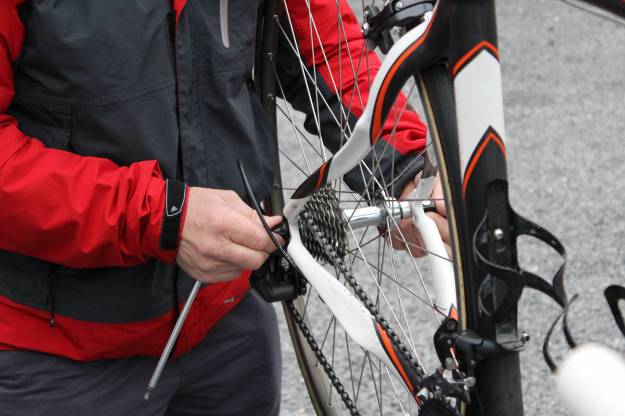Knowledge Level: Beginner
Buying a new bike should be a fun, exciting and motivating. If you’re planning on following any of the British Cycling Training Plans, you’ll be spending plenty of time on your new purchase, so it definitely pays to make sure you get exactly the right bike for you.
Type of bike
Although it would be possible to follow the British Cycling Training Plans on any road worthy bike, with sportives and possibly road racing as your probable final goals, a drop handled road bike is by far the best choice. If you’re concerned about the ride position being too aggressive, many manufacturers now produce road bikes specifically aimed at the sportive market. With more relaxed geometry and hill friendly gearing but still offering the mile munching efficient ride of a more race oriented bike, they’re suitable for a wide range of riders from complete novices to hardened clubmen. Look here for more information on the Anatomy of a Road Bike.
Frame material
Steel, alloy, carbon and titanium are the four most commonly available frame materials for road bikes. Look here for more information on their respective pros and cons. For a novice rider, an alloy frame, potentially with carbon fork and maybe stays, probably offers the best combination of value for money, performance and durability.
Budget
If you’re buying a bike from new, we wouldn’t recommend spending less than £500 on a road bike. Bikes under this price point will typically be excessively heavy, unenjoyable to ride and need parts replacing and servicing so quickly as to make them false economies.
Spending between £700-£900 will get you a really solid bike, especially if you keep an eye out for last season’s deals. However, if you can nudge your spend up to just below £1000, you’ll get far more for your money.
There is a real manufacturers’ price war taking place at this spending point. The reason for this is due to the introduction of cycle to work schemes and their typical £1000 price cap. These schemes offer tax incentivised salary sacrifice payment plans for employees of businesses to purchase bikes to travel to work on. Ask your employer whether they have signed up any of these schemes, what retailers are available to you on it and you could make a real saving.
Prioritise frame and wheels
It’s very easy to be seduced by a higher end groupset but, with modern components from the three main manufacturers, Campagnolo, Shimano and SRAM, being reliable and acceptably lightweight at entry level and intended to be replaced or upgraded with wear, spend your money on the heart of the bike, the frame and wheels. These are what will make the biggest difference to ride quality and will give you a bike that is worth upgrading as you progress in the sport. Buy the best quality frame and wheels your budget allows and be willing to drop a tier or two on the groupset to allow this.
Fit is key
Although online deals can be extremely tempting, it’s worth spending the extra money for the input, expertise and customisation that a good bike shop will be able to offer. Getting your bike professionally fitted will make a massive difference to ride comfort and components such as handlebars, stem and saddle can be chosen to suit your morphology. It is possible to retrospectively fit your existing bike or an off the peg purchase but it’s better to get it right from the start.
Accessories
Don’t forget that, along with your bike, you may have to factor some accessories and clothing into you budget if you’re new to the sport. Find guides to buying additional equipment below:














